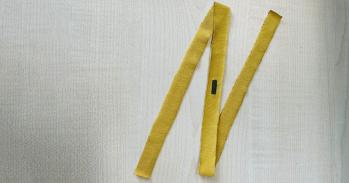
At the Cambridge Centre for Medical Materials, a highly interdisciplinary approach is meeting the challenge of bioengineering new materials for the human body.
At the Cambridge Centre for Medical Materials, a highly interdisciplinary approach is meeting the challenge of bioengineering new materials for the human body.
This means that new research builds on a wide network of expertise, interlocking the knowledge of material scientists, physicists, chemists and engineers with that of cell biologists, biochemists, pharmacists, pathologists, surgeons, dentists and vets.
It’s easy to take the complex and specialised materials that make up our bodies for granted, until something goes wrong. However, replacement tissue is something that most of us will need at some point in our lives. It might take the form of a permanent implant like a replaced hip or knee or it could be a structure designed to be absorbed as the body heals. Members of the Cambridge Centre for Medical Materials (CCMM), a research group headed by Drs Ruth Cameron and Serena Best, are tackling the many questions that surround the design and engineering of effective medical materials.
Medical materials
The first requirement of a material for implantation is that it is non-toxic. Materials that are biocompatible in this sense can be used successfully, particularly if their mechanical properties match as closely as possible those of the original tissue. However, rather than using an inert structure, what if the material could interact in a positive way with the biological system around it? This could encourage a stronger integration of surrounding tissue with the implant, or even stimulate the regrowth of new specific tissue to entirely replace the implant over time. It is these novel types of medical materials that CCMM research projects aim to deliver.
Tailored tools
The demand for high-performance orthopaedic implants continues to grow, both for the treatment of bone diseases in an ageing population and for sports-related injuries. CCMM is developing materials to replace bone, cartilage, ligament and spinal discs: materials that interact therapeutically with the body; bioactive structures that encourage the tissue’s natural function; and scaffolds that provide tailored load-bearing support and yet are porous to allow regeneration of new bone. In particular, methods are being investigated to encourage the patient’s bone to bond to orthopaedic implants, which would improve implant lifetime and performance.
The group is also creating guides for nerve regeneration in damaged limbs, to attract and selectively steer neurons in a specific direction and to repel cells that cause scar tissue formation. Artificial mammary gland structures are being built as models for screening new drugs. And further lines of research include the delivery of active agents to the body, both in combination with devices and as pharmaceutical delivery systems in their own right.
Working at the edge of disciplines
Established six years ago, the group is strongly interdisciplinary and has dozens of collaborations with departments within the University, across the UK and with research bases around the world. This means that new research builds on a wide network of expertise, interlocking the knowledge of material scientists, physicists, chemists and engineers with that of cell biologists, biochemists, pharmacists, pathologists, surgeons, dentists and vets.
There is also a high level of collaboration with the medical devices industry – a must if the new materials developed are to reach the clinic. This has included the creation of spin-out companies; the most recent is Orthomimetics, an award-winning company and the first spin-out from the Cambridge-MIT Institute, which is developing products for regenerative repair. With the right combination of expertise, it’s clear that there is huge potential to engineer improved active materials for the next generation of medical implants.
For more information, please contact the authors Dr Ruth Cameron (rec11@cam.ac.uk, Lucy Cavendish College) or Dr Serena Best (smb51@cam.ac.uk, St John's College) at the CCMM (www.msm.cam.ac.uk/ccmm) in the Department of Materials Science and Metallurgy.
This work is licensed under a Creative Commons Licence. If you use this content on your site please link back to this page.





